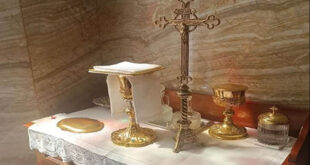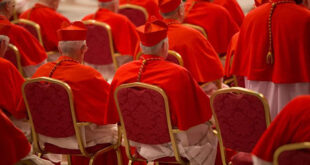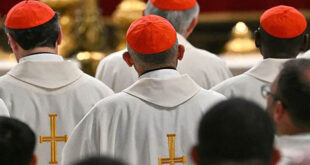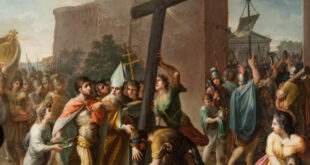“For where your treasure is, there your heart will be also” (Matthew 6:21).
Introduction: The Mystery and Beauty of the Rogito
In the solemn silence of a papal funeral, amid Gregorian chants and the scent of incense, a small sealed parchment rests upon the coffin of the deceased Pontiff. This document, known as the Rogito, is far more than a mere formality: it is a sacred testimony, a bridge between history and eternity, and a reminder that the mission of the Church transcends time. But what exactly is the Rogito? Why is it so significant? And, above all, what spiritual lessons can we draw from this ancient tradition?
In this article, we will explore the profound theological, historical, and pastoral meaning of the Rogito, unraveling how this practice reflects the continuity of the Catholic faith and how we can symbolically apply it to our own spiritual lives.
1. Origin and History of the Rogito: A Link to the Early Centuries of the Church
The term Rogito comes from the Latin rogare, meaning “to ask” or “to plead.” It is an official document prepared by the Holy See that summarizes the life, ministry, and most important works of the deceased Pope. Its origins trace back to the early centuries of Christianity, when the faithful placed inscriptions on the tombs of martyrs and bishops, recounting their witness of faith.
The modern Rogito, as we know it, was formalized in the 20th century, though its essence is much older. For example, during the funeral of Pope St. Paul VI (1978), the parchment was placed in a lead tube inside his coffin, following a tradition meant to preserve the memory of the Successor of Peter for posterity.
2. Content of the Rogito: A Written Testimony of Faith
The Rogito is not simply a biography but a pontifical record that includes:
- The name and episcopal motto of the Pope.
- Key dates of his pontificate (election, consecrations, important documents).
- A summary of his magisterium and contributions to the Church.
- A prayer for his soul, asking God to receive him into glory.
This text, written in Latin, is sealed and placed in the coffin as a symbol that, before God, every human deed is recorded and will be judged with mercy.
3. Theological Meaning: The Pilgrim Church and the Communion of Saints
The Rogito embodies three fundamental truths of the Catholic faith:
A. The Continuity of the Petrine Ministry
The Church is not a human institution but a divine one. When a Pope dies, the Rogito acts as a “passing of the torch” between his pontificate and the next, reminding us that “You are Peter, and on this rock, I will build my Church” (Matthew 16:18).
B. The Hope of the Resurrection
By including a prayer for the Pope’s repose, the Rogito reflects the doctrine of Purgatory and the communion of saints. It reaffirms that death is not the end but the passage to eternal life.
C. The Importance of Historical Memory
In a world where everything is fleeting, the Church safeguards the memory of its shepherds, demonstrating that faith is passed down from generation to generation.
4. Practical Application: How to Live the “Spirit of the Rogito” in Our Daily Lives
Though the Rogito is a papal document, its message is universal. We are all called to leave behind a “spiritual Rogito,” a legacy of faith. How?
A. Keeping a Journal of Grace
Write down blessings, struggles, and moments when God acted in your life. It will be a treasure for your family and your own soul.
B. Living with Eternity in Mind
The Rogito reminds us that our actions are inscribed in the “book of life” (Revelation 20:12). What do we want God to read about us?
C. Praying for the Dead
Just as the Church prays for its Popes, we should offer Masses and suffrages for our loved ones.
Conclusion: The Rogito, a Symbol of Hope for Today
In an age of identity crises and neglect of the transcendent, the Rogito teaches us that life has an eternal purpose. It invites us to ask ourselves: What legacy of faith am I building?
May we, like the great Pontiffs, be able to say at the end of our days: “I have fought the good fight, I have finished the race, I have kept the faith” (2 Timothy 4:7).
May the Rogito of our lives be an eternal praise to God.






